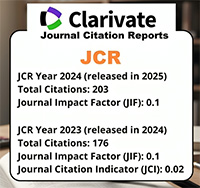Platelet function in patients with lupus anticoagulant and thrombosis
Resumen
ÂIn a group of 337 patients with a history of thrombotic episodes, pregnancy losses and/or thrombocytopenia. 66 cases of lupus anticoagulant (LA) were found, Spontaneous platelet aggregation and the aggregatory responses of platelet rich plasmas (PRP) from 14 patients, with a history of thrombotic episodes. with anticardiol1pin (ACA) levels above 21 IgG antiphospholipid antibodies units and normal platelet counts were studied and compared with those of 8 patients with history of thrombosis and negative LA and ACA (controls). Epinephrine, adenosine diphosphate, collagen and ristocetin were used as platelet aggregation inducers. Early collagen-whole blood interaction (BASIC WAVE), as a measure of platelet recruitment, and the levels of von Willlebrand factor were also determined. The results of each test were compared with those of nine patients, used as controls, with thrombotic antecedents but negative LA and ACA. None of the patients with LA,or the control group, showed spontaneous platelet aggregation. The aggregatory responses, when epinepbrine, ADP or collagen were added to the patient's PRP, were within normal range in most cases (64.2%. 52% and 72% respectively). The highest rate of hyperaggregation after the above mentioned inducers,was 12% and corresponded to the response to collagen. On the contrary, platelet aggregation rate with ristocetin was higher than 100% in 61.0% of the problem group, with no significative difference from the controls. The BASIC WAVE was of low rate and similar in the two groups studied. The von Willebrand factor was significantly higher (150 Ó 55%) in the problem group than in the controls (98Ó 25.6%) (p < 0.01). The present results do not support the theory that platelet hyperactivity plays a significant role in the development of thrombotic complications in patients with LA. The increased von Willebrand factor points toward endothelial cell damage caused by the LA antibodies, with activation of the extrinsic pathway. However, the measurement of other platelet activation markers, would help in establishing the extent of platelet activation and its role in the pathogenesis of thrombosis in patients with LA.




















